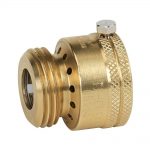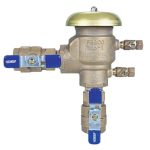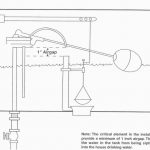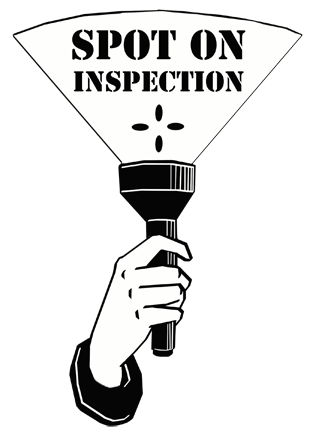One of the most common deficiencies encountered in Houston home inspection is the absence of appropriate plumbing back flow prevention. Even though I commonly report the absence of back flow protection, most homeowners ignore the deficiencies and they remain uncorrected.
What is back flow? In this context, back flow is the cross contamination of the potable water supply with waste water. Potable water is, literally, water suitable for the pot (cooking, drinking, etc). If the drinking water is contaminated with waste water all sorts of unhealthy things are possible.
It may be hard to believe that water can flow backwards in your household plumbing but it can and does happen. Your water supply is under pressure. That pressure keeps the water flowing in the intended direction. Any drop in that pressure while a supply valve is open can cause the flow to reverse direction and contaminate the water supply.
Imagine you decide to fill your 55 gallon trash can with water to clean it. You throw the hose in the can and turn the water on. The hose is submerged in the water in a few seconds and you decide to go inside for a nice bath. When you run the bath water, it may be enough of a pressure drop to suck water out of the garbage can into the house water supply given the right conditions. It is unlikely but it is also possible.
For this very reason, exterior water spigots are required to have back flow preventers installed.  Other common sources of back flow are lawn irrigation systems, toilets, food disposals, shower attachments and spray attachment.
Other common sources of back flow are lawn irrigation systems, toilets, food disposals, shower attachments and spray attachment.
Irrigation systems have a back flow preventer installed.

To prevent back flow from shower and spray attachments, never use them while submerged in water. Keep the shower or spray attachment out of the water and back flow won’t happen. This separation between the water outlet and the waste water is called an “air gap”. All sink faucets are required to have an “air gap” between the outlet and the highest level of the sink to prevent back flow.
Another example of an “air gap” is in your toilet tank. The tank fill hose must be at least 1 inch above the highest level of water in the tank or you could be drinking toilet water.

The most common type of back flow encountered is contaminated water from the food disposal back-flowing into the dishwasher. Most dishwashers drain into the food disposal. Manufacturers have started building back flow prevention into the appliance but we also must install back flow prevention into the connection between dishwasher and food disposal. There are two ways of doing this.
The “high loop” and the “air gap”. Be sure to read the linked articles for more information on preventing dishwasher contamination.
© 2018 Patrick Miceli


Recent Comments